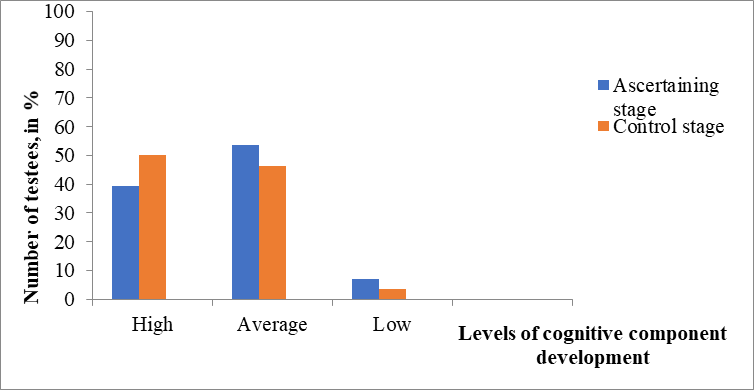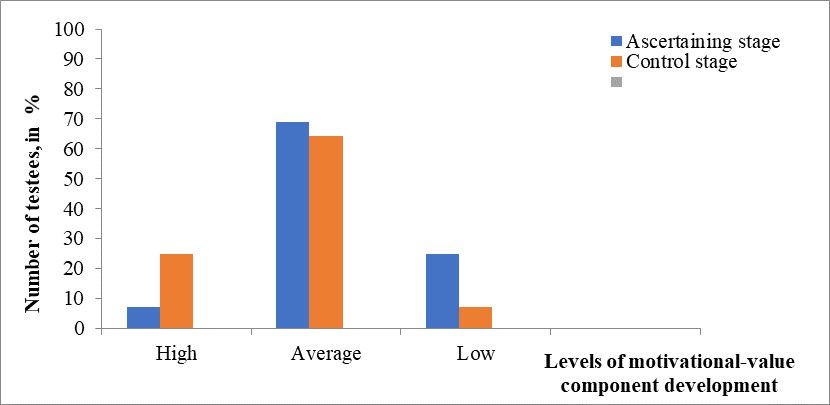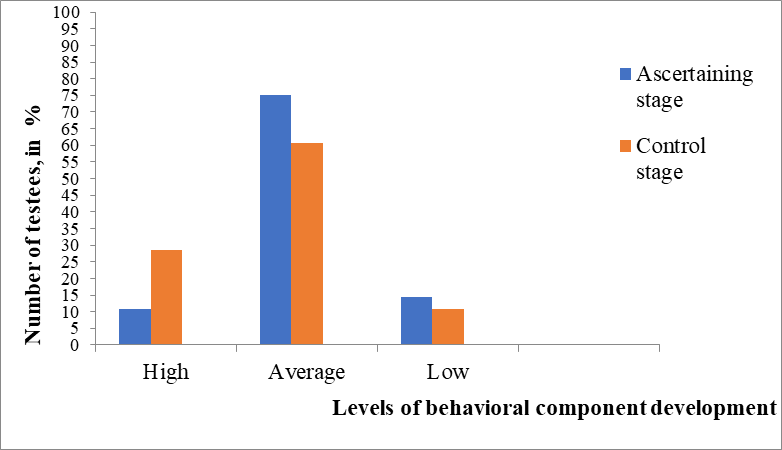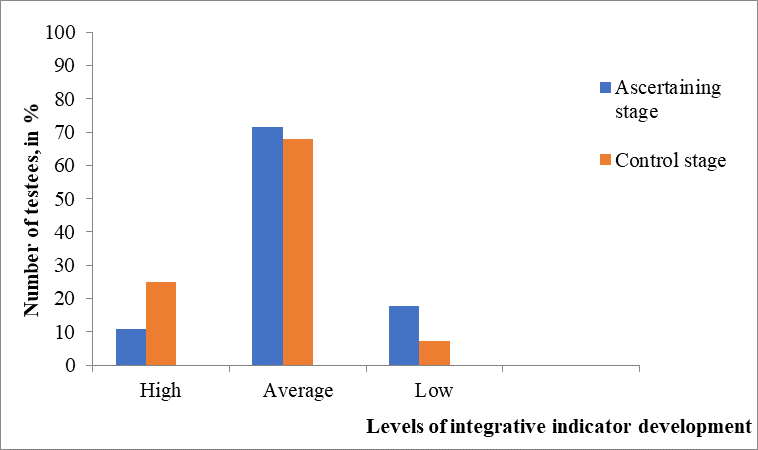Abstract
In the context of socio-economic changes education is challenged with the task to give children a certain level of knowledge and skills in sciences, to help them develop the ability to live in a modern exceptionally complex society, to achieve meaningful goals, to effectively interact with their environment, to solve life problems and adequately reflect on their own actions. Our goal is to develop theoretically and test empirically the educational content to ensure effective development of primary school children from rural areas and their social competence. We applied the following research methods: theoretical analysis of relevant psychological-educational literature, generalization, systematization; testing, pedagogical experiment; methods of mathematical data processing. 28 school students (aged 10-12 years old) living in the countryside of the Republic of Tatarstan took part in the research. ‘Intelligence Test’ (the version for children, subtest ‘Understanding’) developed by Wechsler (
Keywords: Social competenceprimary schoolchildrenrural school
Introduction
Considering the essence of social competence, many researchers define it as knowledge, skills, and methods (models, patterns, scenarios) of behavior in various spheres of a human's social life (Zobov & Kelasiev, 2005; Rubin & Rose-Krasnor, 2001).
Maslova (2007) defines social competence as an integrative personality formation that includes knowledge, skills and abilities formed in the process of socialization allowing a person to adapt quickly and adequately in society and to effectively interact with their social environment.
Schoon (2009) understands social competence as: “a set of behaviors, attitudes and skills that individuals use to interact appropriately and navigate their social worlds.”
We are impressed by the definition of social competence given by Kunitsyna (1995) writes that social competence is the system of knowledge about social reality and oneself; a system of complex social skills and interaction abilities, behavior scenarios in typical social situations that allow you to adapt quickly and adequately, make reasonable decisions considering given situation; using the principle "here, now and in the best way" to extract the maximum possible from circumstances.
Belitskaya (1995) defines the structure of social competence and singles out the following components in it: 1) motivational component constitutes seeing the lives of other people as the highest value, manifestations of kindness, attention and help; 2) cognitive component constitute the knowledge of another person (adults, peers), the ability to understand their characteristics, interests, needs; 3) behavioral component is linked to the choice of adequate ways of communication, ethically acceptable behavior patterns.
Problem Statement
There is no agreement on the components of this phenomenon so far. Korotova (2015) specifies the following components in the structure of social competence: cognitive, motivational-value, behavioral. The cognitive component of social competence presupposes child's knowledge about objects of social reality in the form of concepts. The degree of awareness concerning objects of social reality is recognized as a criterion. The level of primary school children’s knowledge about themselves as an object and subject of social relationships, about basic social roles, norms of communication and interaction, ability to notice changes in mood and emotional state of another person are regarded as indicators.
Motivational-value component of social competence characterizes the degree of social interests formation in primary schoolchildren, availability or absence of external and internal motivation to communicate. This component includes social orientation of activities, readiness for it and its meaningfulness as a criterion. Interest in socially significant activities, initiative, emotional-value attitude, perseverance in overcoming difficulties and attitude towards another person as a supreme value, manifestation of kindness, attention, help and charity are suggested as an indicator.
A behavioral component of social competence is characterized by children’s ability for self-evaluation of their behavior and correction of their own actions. The criterion of formation is social actions and interaction, independent use of socially significant knowledge. The indicator is actions corresponding to generally accepted social norms, their diversity and adequacy, independent and confident behavior in new situations.
Social competence is seen by Western scholars in various ways. For example, they single out such characteristics as social skills, peer recognition, low level of aggression, low withdrawal, pro-social behaviour, problem-solving skills, perspective taking, self-regulation, empathy, self-esteem and leadership (Cavell, 1990; Rose-Krasnor, 1997). Scientists believe that ways and conditions applied to improve social competence in one society are not suitable for use in another one (Gladstone et al., 2010).
Research Questions
The analysis of psychological and pedagogical literature on the research problem showed that scientists have not come to a common understanding of essential characteristics of social competence; forms and methods of forming social competence in children from rural areas have not been proposed.
In this regard, we asked ourselves: What are the features of social competence formation in primary school children from rural areas? What forms and methods promote social competence formation in children of this category?
We set a goal to theoretically substantiate and empirically test content, set of forms and methods that ensure effective formation of social competence in primary school children from rural areas.
Purpose of the Study
Our goal is to substantiate theoretically and empirically test the content, set of forms and methods to ensure effective formation of social competence in primary school children from rural areas.
Research Methods
Methodology and Empirical Methods
In compliance with the goal and objectives of the study, we applied the following research methods: theoretical analysis of psychological and educational literature on the problem, generalization, systematization; testing, pedagogical experiment; methods of mathematical data processing.
28 pupils aged from 10-12 years living in the village Chura of the Republic of Tatarstan took part in the research (1350 villagers).
The following methods were used in the study. "Intelligence test" by Wechsler (1949), a children's version (subtest "Understanding") was applied to study the cognitive component of social competence. This test is designed to study the level of social knowledge about environment, ability to model behavior in social situations, development of thinking practicality, testees’ judgments relating to their life and social experience.
The peculiarity of the subtest is that the child is presented with a certain problem situation. While solving it, the child must offer his/her own solution to the social problem.
It is important to note that the cognitive component reflects a person's knowledge of the environment, knowledge from the sphere of people's relationships, human knowledge about themselves, etc. In the process of accumulating this knowledge, a person forms social intelligence that is a constituent element of the cognitive component. Social intelligence provides understanding of people's actions and deeds, human speech production as well as non-verbal reactions (facial expressions, postures and gestures), the ability to solve conflicts, to use own social experience and obtained knowledge in practice.
"Diagnostics of students’ social competence" by Bespalova (2009) was used to diagnose the motivational-value component of social competence. The following scales were studied: Awareness of the need to expand (or have a wider range) of social knowledge, skills and motivation for a socially significant activity; Comprehension and adequate assessment, correlation of specific social conditions and own capabilities to achieve the expected result in the situation.
The behavioral component of social competence in children was investigated by means of the technique "The individual card of child’s social behavior assessment" by Prikhozhan (2007). This methodology is designed to examine the child’s social sphere when interacting with adults and peers, assimilating norms and requirements of the nearest environment, the ability to behave in society, child’s orderliness and independence.
The integrative indicator of social competence formation was calculated as the sum of all three components (by transferring to T-scores).
Results and Discussion
In the stating stage of the study, we found out that all components of social competence, including the integrative index, in primary school children living in rural areas are at an average level. Children have incomplete basic knowledge about norms and rules of social life, insufficient representations about various means of communication; they do not know how to cooperate with others, not all children have motivation for socially significant activities. Moreover, children are not pro-active and they are not independent. The majority of respondents do not fully assess their capabilities; they do not know how to use social experience and knowledge in everyday life.
These results allowed us to arrange a special work aimed to form social competence in children living in rural areas. We have developed the program "The Path to Success" to develop social competence in primary school children from rural areas.
The objectives of the program are as follows: mastering new knowledge about norms and rules of social behavior for successful adaptation in society; acquisition of new social experience to form vital life skills facilitating successful adaptation in society; increase of motivation to socially significant activity; formation of the child’s emotional sphere, value attitude to others; teaching children new ways and forms of communication.
The program consists of three main blocks comprising of 22 lessons.
The first session of the program is about getting to know children, explaining them the goals, tasks and directions of the forthcoming work. The first block (6 sessions) of the program is aimed to form the cognitive component of social competence. All lessons of the first block give children an idea of social behavior norms, ways and expressive means of communication (gestures, facial expressions and movements), basic social roles and human rights, etc. Having completed training in this block, children should learn and apply social norms and rules, ways of interacting with others, and have knowledge of main social roles.
The second block (7 sessions) is focused on the motivational-value component of social competence. All activities of the second block are aimed to give children an idea about moral behavior necessary to interact with others; to teach children sympathy, empathy, mutual assistance, caring attitude towards others; to form motivation for socially significant activities in children, etc. After completion of training, children should form ideas about moral relations with others and respect for them. Children should be acquainted with such qualities as sympathy, empathy, mutual aid and mutual respect. Classes increase motivation for socially meaningful activities.
The third block (7 sessions) develops the behavioral component of social competence. All lessons of the third block are aimed to teach children to use acquired social knowledge in everyday life, to exercise independent and confident behavior in new situations, to resolve conflict situations, to cooperate and work in a team, etc. The training according to the program of this block will teach children to apply obtained social knowledge in life situations, take part in collective deeds, adequately and calmly react to conflict situations, and be independent. They will learn to predict, evaluate and adjust their own behavior to meet life situations.
The last lesson of the program is aimed to revise, generalize and expand the knowledge gained at previous classes.
In the control stage of the research, the level of social competence formation in primary school children living in rural areas was re-assessed. Figure

The study of obtained data gives grounds to draw the following conclusions: there is an increase in the number of high indicators by 10.72%, and a decrease in the low level by 3.57%. The researchers observed expansion of social knowledge about surrounding reality, norms of communication and behavior in society. The respondents learned to foresee consequences of their own and other people's actions, to choose constructive ways to resolve the conflict. Children have become more independent, initiative and socially active.
The next stage of the study was the reassessment of the motivational-value component; Figure

The comparison of the reassessment results gives grounds to draw the following conclusions: the high indicator for the motivation-value component increased by 17.86%. The low level decreased by 17.86%. The change in indicators testifies that an increase in motivation and activity towards different types of performance is observed in children. If before the forming stage children were hardly involved in work, after going through the author's program children became more motivated and proactive. Testees began to adapt quickly to new social conditions and to objectively assess their personal potential.
Let us further consider obtained indicators for the behavioral component in the control stage of the research (Figure

There as an increase in the high indicator for the behavioral component by 17.86%, and a decrease in the low indicator by 3.57%. This suggests that children began to choose constructive forms of behavior to resolve conflict situations and effectively interact with people around them; they, learned how to organize themselves, to implement tasks responsibly, to monitor their behavior. Students showed special interest in social life and news in society.
If we compare the integrative indicator of social competence, we can speak of the increase in the high level of social competence by 14.29% and a decrease in the low level by 10.72%. These changes demonstrate a positive dynamics in social intelligence, worldview development, behavior and communication of children, successful socialization of the child's personality.

Student's t-test was used to calculate the reliability of differences in assessed indicators (Table
Findings
The study identified that the following forms and methods can be used to form social competence in children living in rural areas: training sessions, literary discussions, travels, debates, role games, excursions, stories, conversations, educational situations, encouragement, etc.
The lack of self-confidence and indecisiveness are often observed features in rural children. Manifestation of these qualities in children impedes their harmonious interaction with themselves, society, surrounding world causing, therefore, difficulties in personality socialization in future. Leveling of these qualities is possible by means of art therapy methods: drawing, modeling with paper, music, expressive body movement.
Various means of development: fairy tales, proverbs, sayings, songs, cartoons, children's films, games can be employed in class.
Conclusion
The process of social competence formation is necessary for full-fledged development of the child's personality. Moreover, living conditions of children should be taken into account. Social competence formation in primary school children living in the countryside requires consideration of the following features.
The life style of rural settlements still preserves elements of traditional neighborhood community. They have a fairly stable composition of residents, and close kinship and neighborhood links. This allows children to learn to closely interact with their close environment since childhood. Countryside life is characterized by "openness" of communication. The lack of large social and cultural differences between residents, the scarcity of real and possible contacts make communication of villagers quite close and cover all aspects of life.
The rural way of life has a significant potential for the development of the behavioral component of social competence. Children from early years are included in adults’ creative work. In the family, the child learns both to work and respect the labor of adults. At school, they often have labor practices, too. School children from primary classes start working on a school site (grow vegetables and fruit). When they visit farms, they get the opportunity to observe and understand the labor of adults, with such professions as an agronomist, zootechnician, cook, milkmaid, driver, etc.
The rural settlement is rich in its natural resources: rivers, lakes, springs, forests, fields, etc. Excursions to nature with primary school children favorably affect the harmonious development of child's personality, fosters feelings of love and respect for natural resources. Talks with children on the topics of environmental safety of the native land are of great help.
The countryside has preserved the integrity of national self-consciousness, inner spiritual wealth, careful attitude to the Motherland and nature to a greater extent than the city. In such conditions, children much earlier form respect for family traditions, veneration of elders, respect for people of labor, mutual assistance that facilitates social competence formation. Consequently, folk art, proverbs, sayings, folk songs, dances, etc. should be used to form the cognitive component of social competence
The circle of children’s communication in rural areas is not so extensive, but communication itself is distinguished by the depth and detailed knowledge of surrounding people. Experience of older generations is transmitted through a concrete example. When a teacher gives examples of fellow villagers, children develop motivational-value and behavioral components of social competence.
The village still has a lower level of people’s education and, consequently, a lower overall level of adults’ culture that surround the child. This impacts the development of abilities, the level of knowledge and the horizon of children and results in understated demands for obtaining education. The village has limited opportunities for self-education and independent cultural growth: poorer library funds and range of films, fewer television programs, few circles, sections, etc. It is more difficult for villagers to go to theaters and museums. To expand their horizons, children can visit a local history museum, regional House of Culture, a center for children's creativity.
Acknowledgments
The work is performed according to the Russian Government Program of Competitive Growth of Kazan Federal University. This work was funded by the subsidy allocated to Kazan Federal University for the state assignment in the sphere of scientific activities №27.9412.2017/8.9
References
- Bespalova, G. M. (2009). Diagnostics of students’ competencies. The Journal of Handbook of the class teacher, 1, 44-54.
- Belitskaya, G. E. (1995). Social competence of the personality. Moscow: IP RAS.
- Cavell, T. A. (1990). Social adjustment, social performance, and social skills: A tri-component model of social competence. Journal of Clinical Child Psychology, 19(2), 111-122.
- Gladstone, M., Lancaster, G., Umar, E., Nyirenda, M., Kayira, E., Van Den Broek, N., & Smyth, R. L. (2010). Perspectives of normal child development in rural Malawi–a qualitative analysis to create a more culturally appropriate developmental assessment tool. Child: care, health and development, 36(3), 346-353.
- Korotova, Y. V. (2015). Structural-content characteristic of social competence in a primary school child. Journal of Public Education, 3, 19-24.
- Kunitsyna, V. N. (1995). Social competence and social intellect: structure, functions, interrelations. Journal of In collection: Theoretical and Applied Issues of Psychology, 1, 49-61.
- Maslova, I. A. (2007). Socialization of the adolescent in the educational space of the institution of additional education for children: monograph. Magnitogorsk: MISI.
- Prikhozhan, A. M. (2007). Anxiety psychology: preschool and school age. Publisher Piter.
- Rose-Krasnor, L. (1997). The nature of social competence: A theoretical review. Social Development, 6(1), 111-135.
- Rubin, K. H., & Rose-Krasnor, L. (2001). The solution of the interpersonal problem and social competence in children’s behavior. St. Petersburg: Peter.
- Schoon, I. (2009). Measuring social competence (RatSWD Working Paper No. 580). German Council for Social and Economic Data: Federal Ministry of Education and Research. Retrieved from www.ratswd.de
- Wechsler, D. (1949). Wechsler intelligence scale for children.
- Zobov, R. A. (2005). Social health and human socialization. SPb: CHEMIZDAT.
Copyright information

This work is licensed under a Creative Commons Attribution-NonCommercial-NoDerivatives 4.0 International License.
About this article
Publication Date
05 September 2018
Article Doi
eBook ISBN
978-1-80296-044-0
Publisher
Future Academy
Volume
45
Print ISBN (optional)
-
Edition Number
1st Edition
Pages
1-993
Subjects
Teacher training, teacher, teaching skills, teaching techniques
Cite this article as:
Kalatskaya, N. N., & Drozdikova-Zaripova, A. R. (2018). Case-Study Of Social Competence Development In Primary School Children From Rural Areas. In R. Valeeva (Ed.), Teacher Education - IFTE 2018, vol 45. European Proceedings of Social and Behavioural Sciences (pp. 75-83). Future Academy. https://doi.org/10.15405/epsbs.2018.09.9

